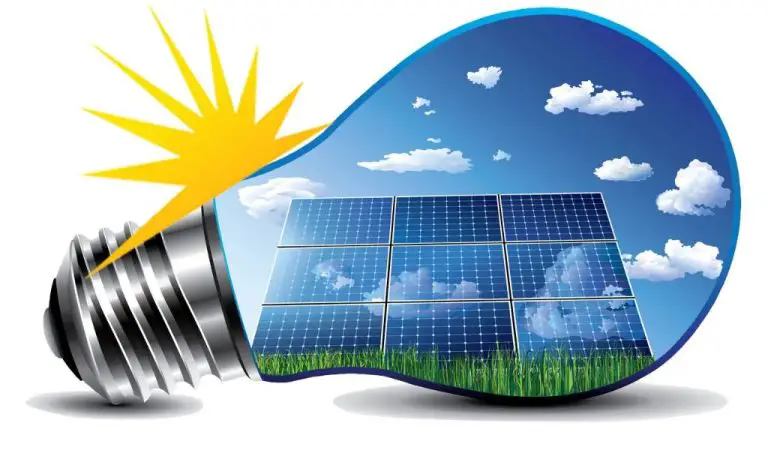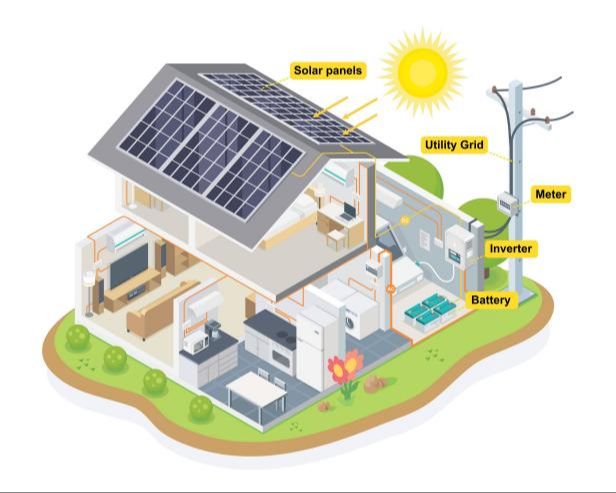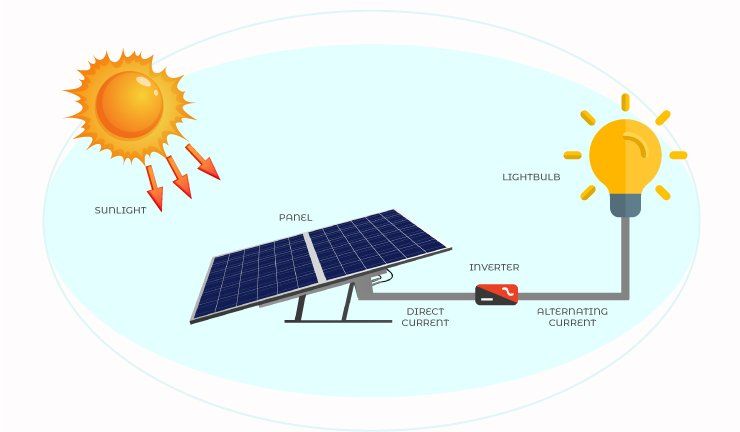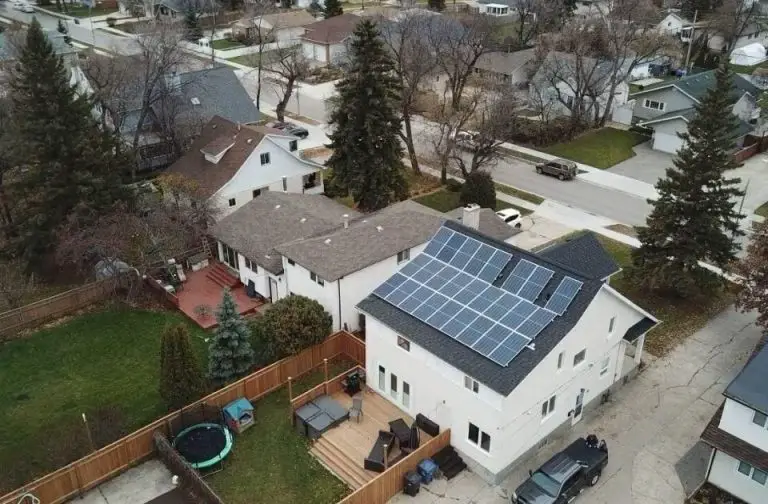Why Is The Sunlight A Renewable Energy Source?
Renewable energy comes from natural sources that are constantly replenished, such as sunlight, wind, rain, tides, waves, and geothermal heat. This means that renewable energy is in endless supply and makes it more sustainable than traditional fossil fuels that are limited and will eventually run out.
One key renewable energy source is solar energy from sunlight. Sunlight can be harnessed in all areas of the world and converted into electricity or heat using technology such as solar photovoltaic panels and solar thermal collectors.
What Makes Sunlight Renewable
Sunlight is considered a renewable energy source because it is continuously supplied to the Earth and is virtually inexhaustible for human timescales. The sun produces energy through a process of nuclear fusion, fusing hydrogen atoms into helium atoms and releasing enormous amounts of energy in the process. This process has been ongoing for over 4.5 billion years and will continue for at least another 5 billion years.
The amount of solar energy that reaches the Earth’s surface in one hour is more than the entire world’s energy needs for one year. Only a tiny fraction of the available solar energy is currently being utilized. Even as solar energy generation expands greatly in the coming decades, the sun will keep shining. For practical human purposes, the supply of solar energy is limitless. Unlike fossil fuels which can be depleted, solar energy will continue to be available as long as the sun itself exists.
Solar Energy Conversion

The key technology for harnessing solar energy is the photovoltaic cell, commonly known as a solar panel. Photovoltaic cells are made from semiconducting materials like silicon that are able to convert sunlight directly into electricity through the photovoltaic effect. When photons from sunlight hit the solar cell, they transfer their energy to electrons in the semiconductor material, causing the electrons to flow and generate an electric current.
Solar panels consist of many small interconnected photovoltaic cells that together form a panel or module. The direct current (DC) electricity generated by the solar cells flows to an inverter where it is converted into alternating current (AC) electricity that can be used to power homes, businesses or fed into the electric grid. Solar arrays are just groupings of multiple solar panels working together to generate electricity on a large scale.
Solar energy is an elegant renewable energy solution in that it directly converts abundant sunlight into useful electricity without any moving parts or environmental emissions. The modular nature of solar panels also allows them to be scaled up or down to meet different energy needs.
Abundant Resource
The sunlight that shines on the Earth’s surface in one hour contains more energy than the entire world consumes in an entire year. To put some statistics behind this:
– The total solar energy absorbed by Earth’s atmosphere, oceans and land masses is approximately 3,850,000 exajoules (EJ) per year.
– In comparison, the world’s total energy consumption in 2020 was estimated to be around 600 EJ.
– This means the planet receives more than 6,000 times the amount of energy it needs to power human civilization from the sun alone each year.
The potential of solar energy is enormous when you consider these numbers. Even capturing a tiny fraction of the solar energy that reaches Earth would be enough to meet rising energy demands. And since the sun’s output is effectively limitless relative to human scales, solar energy is an incredibly abundant resource for renewable, clean power.
Clean Energy
One of the biggest benefits of solar energy is that it produces power without emitting any greenhouse gases or air pollutants. Fossil fuels like coal and natural gas generate large quantities of carbon dioxide and other emissions when burned to produce electricity. This contributes significantly to climate change, air pollution, and associated health problems. Solar panels, on the other hand, can generate electricity silently and emission-free. Converting sunlight into energy using photovoltaics produces no air pollution, carbon dioxide, other greenhouse gases, or toxic materials. Solar energy is one of the cleanest renewable energy sources available.
With solar power, we can move towards a cleaner energy future and address environmental issues like global warming and smog. Widespread adoption of solar energy would help reduce air pollution and associated respiratory illnesses. It would also allow countries to meet emissions reduction targets under climate agreements like the Paris Accord. The development of large-scale solar plants could replace fossil fuel power plants, cutting emissions from the electricity sector. Rooftop solar on homes and businesses also displaces electricity from the grid, reducing overall emissions. The clean nature of solar power makes it an attractive option as we aim to decarbonize our energy system.
Reduced Reliance on Fossil Fuels
Solar energy can significantly reduce our reliance on fossil fuels like coal, oil and natural gas. Fossil fuels currently account for over 80% of total energy consumption worldwide. However, fossil fuels are non-renewable and their reserves are being depleted much faster than new ones are being created.
By harnessing the sun’s energy for electricity generation instead of burning fossil fuels, we can reduce greenhouse gas emissions that contribute to climate change. Solar electricity can displace coal and natural gas power plants that produce carbon dioxide and other air pollutants. Widespread adoption of solar energy would lessen the environmental impacts of mining, drilling, transporting and burning fossil fuels.
Solar energy systems at homes, businesses and utilities can provide clean electricity without creating any air or water pollution. As solar electricity generation grows, the need for new coal and gas power plants is reduced. With enough solar capacity, existing fossil fuel plants can even be retired. This transition helps create a more sustainable energy future.
Jobs and Economic Impact
The solar energy industry has experienced significant job growth in recent years. As the costs of solar panels and installation continue to fall, more homes and businesses are adopting solar power. This growing demand for solar is fueling strong job creation. According to the Solar Energy Industries Association (SEIA), the solar workforce has grown 167% over the last decade, from about 93,000 jobs in 2010 to over 250,000 jobs in 2020. The industry now employs twice as many people as the coal industry.
The availability of solar jobs is spread across many regions and states in the U.S. California leads in total solar jobs with over 75,000, followed by Florida, Texas, New York and Massachusetts. But even some less sunny states are seeing growth, like Illinois, New Jersey, and Pennsylvania. Solar jobs also increased in 31 states in 2019 prior to the pandemic. There are a wide range of solar professions, including installers, project developers, sales and marketing, manufacturing, and more. Women represent about 26% of the solar workforce, an increase from previous years. The industry is also working to expand diversity and inclusion overall.
In addition to job creation, solar power generates economic growth through new investments, cheaper electricity bills, and U.S.-based manufacturing and supply chains. The SEIA estimates the solar industry generated over $18 billion of investment in the U.S. economy in 2019. As solar adoption expands, Americans are expected to save billions in energy costs while growing the clean energy economy and creating good local jobs.
Challenges and Limitations
While solar energy has enormous potential as a renewable resource, it also comes with some challenges and limitations that need to be addressed.
Intermittency
One major challenge with solar energy is intermittency. Solar power relies on sunlight to generate electricity, which means production is impacted by weather, time of day, and seasons. Sunlight is not available at night and is reduced on cloudy days, which can make solar inconsistent as an energy source.
Storage Limitations
The intermittent nature of solar power makes energy storage an important issue. Effective storage solutions allow solar energy to be used anytime, not just when the sun is shining. However, current storage technologies like batteries and pumped hydro have limitations in capacity and affordability.
High Upfront Costs
While ongoing costs of solar power are quite low once installed, the upfront investment for purchase and installation of solar systems can be high. These equipment and installation costs make adoption cost-prohibitive for some homes and businesses.
Future Outlook
The future looks bright for solar energy. Projections show massive growth in solar generation capacity in the coming decades. According to the International Renewable Energy Agency (IRENA), total installed solar photovoltaic capacity could reach over 25,000 gigawatts globally by 2050, a 25-fold increase over 2020 levels. Solar is expected to become the dominant source of electricity by mid-century.
Driving this growth is the rapidly falling cost of solar panels, making solar power cost competitive with fossil fuels in most of the world. Economies of scale from increased production and advances in solar cell technology will further reduce costs. New solar installations could consistently be cheaper than just operating existing fossil fuel plants by 2025, according to BloombergNEF.
Innovations will also boost solar energy. More efficient solar panels, improved battery storage technology, floating solar farms, and better solar forecasting will all help increase solar’s share of electricity generation. With increased research and development, solar has the potential to fully transition societies away from polluting fossil fuels to clean, renewable energy.
Conclusion
In summary, sunlight is considered a renewable energy source because it is continuously supplied to the Earth and will not run out or be depleted. The energy from the Sun’s rays can be harnessed in different ways, most commonly through solar panels that convert sunlight into electricity. Solar energy is an abundant, clean, and sustainable alternative to fossil fuels. Widespread adoption of solar power will lead to reduced greenhouse gas emissions, economic growth through job creation in the solar industry, and lower reliance on finite resources like coal and natural gas. While solar currently accounts for a small percentage of global electricity generation, costs have fallen dramatically and adoption continues to increase. With advancements in technology and battery storage, the future looks bright for solar to play a major role in the world’s clean energy mix. Tapping into the limitless power of the Sun will be critical for building a low-carbon society and ensuring the Earth remains habitable for generations to come.







